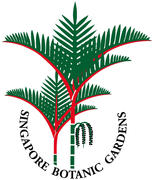Nomenclature
Ipomoea indica (Burm.) Merr., Interpr. Herb. Amboin. 445. 1917.
Convolvulus indicus Burm., Index Univ. Herb. Amb. 7: 6. 1755
Convolvulus acuminatus Vahl., Symb. Bot.. 3: 26 (1794)
C. congestus (R. Br.) Spreng.
Ipomoea acuminata (Vahl) Roem. & Schult., Syst. Veg. 4:228 (1819)
I. amoena Blume
I. cataractae Endl.
I. cathartica Poir.
Ipomoea congesta R. Br., Prod. Fl. Nov. Holl. 485 (1810)
I. insularis (Choisy) Steudel
I. kiuninsularis Masamune
Ipomoea learii Paxton, Paxton’s Mag. Bot. 6:267 (1839).
I. mutabilis Lindl.
Parasitipomoea formosana Hayata
Pharbitis acuminata (Vahl) Choisy
P. acuminata var. congesta (R. Br.) Choisy
P. cathartica (Poir.) Choisy
P. indica (Burm.) R. C. Fang
P. insularis Choisy
P. learii (Paxton) Lindl.
Description
Fang R.C., G. Staples, et al. 1995. Convolvulaceae in P. Raven & C.Y. Wu (eds.) Flora of China 16: 271–325.
Cytology
Fang R.C., G. Staples, et al. 1995. Convolvulaceae in P. Raven & C.Y. Wu (eds.) Flora of China 16: 271–325.
Biogeography, Ecology and Natural History

Native of South America, now circumtropical as a cultivated and naturalized plant; China (Guangdong, Nanhai Zhudao, Taiwan), Indonesia, Japan, Malaysia, Myanmar, New Guinea, Pakistan, Philippines, Sri Lanka; Pacific Islands.
Australia (Western Australia; Queensland; New South Wales; Victoria)
Often
in coastal habitats or moist forests, weedy; 0–500 m.
Fang R.C., G. Staples, et al. 1995. Convolvulaceae in P. Raven & C.Y. Wu (eds.) Flora of China 16: 271–325.
Other information
Fosberg (Bot. Not. 129: 35–38. 1976) has sorted out the complicated nomenclature for this pantropical species and established that Ipomoea indica is the correct name for it.
Authorship for webpage



Add new comment